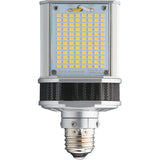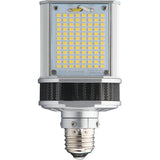Reducing Load - Benefits of LED Retrofits
Posted by Nick on for ProLampSales

Half a decade ago, when LEDs were either cost prohibitive if available or simply unavailable as replacements, retrofitting was a pipe dream for commercial property managers. But with prices down as much as 90% for LEDs from a few years ago, switching to LED is no longer a huge up-front investment.
But saving money on energy costs is not the only benefit of replacing incandescent, halogen, and fluorescent lamps with newer LED bulbs. Some of these benefits include reducing maintenance costs, decreasing cooling costs, proactively responding to changing legislation, possibly becoming a LEED certified building, and reducing load on regional utilities.
Old Utilities, Expensive Equipment
In this article, we'll take a look at how reducing energy costs for end users by encouraging energy efficient retrofits, will reduce load for utilities. It should come as no surprise that many regional utilities are struggling with energy rates both for usage and demand. The US Energy Information Administration shows a $12.29 Cents per Kilowatt charge for the United States overall in February 2015, up from $10.34 a year ago. Demand rates for the commercial and industrial sector have also increased.
The main problem for utilities is old and expensive infrastructure, requiring massive amounts of capital investment to repair existing electrical generation equipment or have new equipment built. Synapse Energy Economics has put the estimate for a new coal-fired power plant at over $2 billion (PDF), while a nuclear power plant could run as high as $9 billion (PDF).
Since the price of new construction is not one ratepayers are willing to pay, the higher costs of running older, inefficient equipment is passed off to the end-users - residential, commercial and industrial. These increased costs include both energy consumption and demand rates, or are hidden in taxes, surcharges, or fees.
Enter the Rebate
Instead of changing their own equipment, utilities have realized it makes more sense and costs less to subsidize the purchase of more energy-efficient equipment for end users. These come in the form of rebates from either utilities or municipalities which have greatly reduced the cost of energy efficient equipment include light bulbs such as CFLs and LEDs.
Rebates help both consumers, businesses, and utility companies (despite the fact that the money from the rebate comes from the utility, which came from the end users to begin with). By subsidizing the up-front cost of switching from inefficient incandescent and halogen to more efficient fluorescent, CFL, and LED, utility companies reduce the load on their own equipment. This allows them to reduce their expenses in maintaining, repairing, or adding to their electrical generation infrastructure.
Of course, in the long run, as population increases and equipment breaks down, both repairs and new construction are required by the utility companies. Switching from old tech to new, whether with a rebate or not, allows the utilities to kick the can down the road, while introducing end users to newer lighting technology faster than they would be willing to adopt it without the rebates.
Featured image © Kevin Dooley Flickr Commercial License
- Posted in Energy Efficiency, Retrofits
Featured Products (View All)
0 Comments




